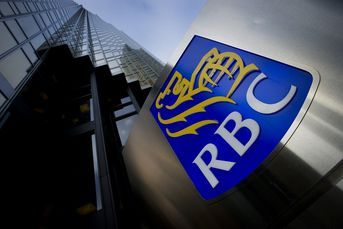At Edward Jones, it’s still one person, one office
Company bucks industry trend toward forming broker teams.
As more and more firms push their advisers to form teams to better serve investors, one big name is bucking the trend.
Edward Jones, founded in 1922 around a model of staffing one adviser per branch office, has no intention of changing its ways, according to John Rahal, a principal in charge of recruiting and talent acquisition at the firm. It’s standing its ground and avoiding hiring teams or allowing its advisers to partner up, even as it has become something of a standard practice in the industry.
“Our business model has served us well for 95 years,” Mr. Rahal said. “You have to be a special individual in our industry that understands our business model … and that you will be in a branch by yourself.”
Even if an adviser’s book of business starts to grow beyond what they have the resources to serve individually, Mr. Rahal said advisers won’t be able to hire another adviser to share assets. The adviser would have to add additional client assistants, known as branch office administrators, or pass off clients to another branch in the area. The firm also would not hire an adviser who is not willing to work in a solo office.
“That’s the way you deeply serve clients,” he said. “You deeply serve clients by having a meaningful relationship with an appropriate amount of families that you focus on.”
The policy at Edward Jones runs counter to a sweeping trend that has taken hold at large brokerage firms. Most wirehouse firms, for example, offer bonuses to advisers who team up with others and have specialists or certified financial planners on their team. They say it helps advisers serve a variety of needs for clients, particularly the high-net-worth and ultra-wealthy. In addition, teaming makes it harder for a single adviser to join another firm and take clients with him or her.
The average number of professional staff per practice is 3.3 at wirehouses, 5.2 at dual-registered practices and 4.5 at registered investment advisers, according to data from Cerulli Associates.
“The appeal of adviser teaming has grown among both established and new advisers,” said Kenton Shirk, an associate director at Cerulli, in a report on teaming. “For advisers, a successful merger can generate substantial growth and productivity enhancements.”
Mr. Rahal said Edward Jones, which reported about 14,000 advisers at the end of last year, views teams as too complicated in terms of conflicting personalities, payouts and figuring out how to transition assets in retirement. Right now, Edward Jones divides assets among a handful of advisers in other branches when a veteran departs.
“If you have a team approach of three financial advisers, there’s got to be one lead dog typically, and then the next question becomes how you get valued sharing commission and what happens at retirement,” he said. “I will never say never, but I will say that our belief is in one financial adviser not having to navigate the idiosyncrasies of personalities and totally focusing just on their clients with their branch office administrator.”
Mr. Rahal said Edward Jones’ home office in St. Louis is designed to play the role a specialist or other team member might play in order to serve a wealthy client.
“We have some of the same expertise in St. Louis for clients with more sophisticated needs,” he said.
Shunning teams is likely to make it harder for Edward Jones to recruit, especially if it wants to go after wirehouse brokers, according to Danny Sarch, an industry recruiter with Leitner Sarch Consultants.
“If you look at it and say the bigger producers are generally on a team” it would make it difficult, according to Mr. Sarch.
The firm, which has said it wants to have 20,000 advisers by 2020, expects to bring in in 600 advisers this year, short of its goal of 800, according to Mr. Rahal.
Having one adviser per office makes sense for the firm’s model of training their advisers and then allowing them to build their business by going door-to-door, concentrating on local markets.
The firm also isn’t as dependent on recruiting for new talent. About 75% of new hires come from career changers, and 10% to 15% were from universities or were military veterans, Mr. Rahal said. The remaining approximately 10% had some experience in the brokerage industry.
“I give them credit for sticking to their plan,” Mr. Sarch said. “And they’re one firm that has successfully trained over the years in a way that others have not.”
(More insight on Edward Jones’ hiring and growth plans)
Learn more about reprints and licensing for this article.






